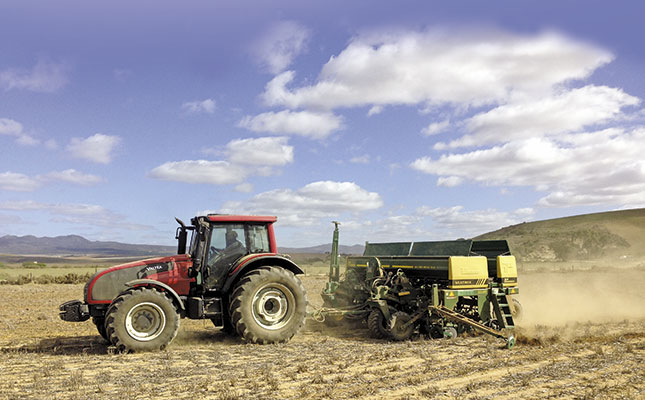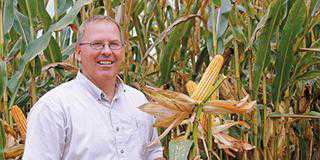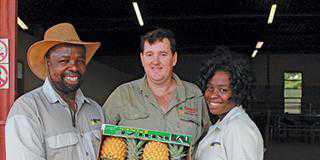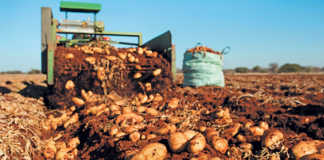
Valtrac dealer Human Landboudienste was a little nervous about testing the Pierobon no-till disk planter in the southern Cape. Hans-Jurie Human from Human Landboudienste says it performs exceptionally well with maize, wheat and fine seed on the Highveld, but the company was worried about how the stony soils of the southern Cape would affect the machine.
The planter, however, lived up to its reputation for being robust and durable. “We experienced no problems with wear and tear the entire season,” explains Hans-Jurie. During the past season, the planter was tested on a variety of soils over an area of 200ha on several farms around Swellendam, Bredasdorp, Riviersonderend, and Caledon. The stone content of these soils ranged from 30% to 60%.
All of the Pierobons were designed for minimum maintenance. “The major pivot points are fitted with tapered roller bearings that can withstand the great axial forces, where other planters normally have shafts and bushes,” says Hans-Jurie. He ascribes the success of the planter in the severe planting conditions of the southern Cape to the design of its single coulter.
Angled both vertically and horizontally, it creates the ideal seed bed and also works exceptionally well in gravelly soils. Instead of lifting stones out of the soil, it pushes them aside without bringing out other stones. The Pierobon planter easily planted through thick maize residue, says André Groenewald, who farms at Haelkraal near Riviersonderend.

André Groenewald (left), who farms at Haelkraal near Swellendam, and Hans-Jurie Human look at the wheat planted by the Pierobon Multi-Mix no-till disk planter in a land in which yellow maize was planted the previous season.
“In the past I had no choice but to burn the residue, as it became too thick to move in with a tine planter,” he explains. “I couldn’t even make it more accessible by pulling tyres over it. “The fact that the Pierobon disk planter could plant in the unburnt residue enabled me to retain the progress made in building up the soil with min-till over the past five to seven years.”
Three options
André admits that farmers in the area are hesitant to go the full no-till route, because of the challenge of mulch build-up and fewer herbicide control options. “Most farmers are waiting for each other to make the switch to learn from their mistakes,” he chuckles. The Pierobon has three options for wheat. The MD single disc planting unit is the one evaluated in the Southern Cape.
The TD double disc planting unit and the Multimix have single disc units on the front row for wheat and double disc units with a metering system at the rear for summer crops. Whereas farmers in the Highveld use a Pierobon with a double coulter, Human Landboudienste decided to use one with a single coulter in its trials, as the total pressure exerted on the soil by a double coulter is put onto a single coulter for maximum effect.
The row spacing can be set at 190mm, 210mm and 265mm. Planter widths range from 3,80m to 11,35m, using either a single fixed frame or multiple smaller flexible frames.
Unique design
All Pierobon planters can be towed sideways by means of a small drawbar on the side of the planter. The planters can also be customised for use in specific conditions.To prevent stones and plant material sticking between the press wheels, Human Landboudienste decided to use only a single press wheel on the planter for its trials.
The press wheel has a unique design – it’s slightly angled to press more from the side of the seed to improve germination. Pressure on the wheel can be adjusted manually according to the soil type and planting conditions. Also unique is a wide depth gauge wheel that regulates the coulter cutting depth.
It incorporates a metal frame that cleans the wheel and prevents the coulter from clogging. The gauge wheel also puts pressure onto the ground and plant residue, while the coulter cuts through the residue instead of pressing it into ground, minimising the issue of hair-pinning. Another great advantage of the Pierobon is its ability to plant at a speed of 10km/h under normal conditions. It will be slower in very stony soil, but still significantly faster than the tine-planters currently available, which work at between 5km/h and 7km/h.
According to Hans-Jurie, this gives the Pierobon the ability to plant larger areas quicker than a tine planter could.
Contact Hans-Jurie Human at 083 557 1386 or [email protected].













